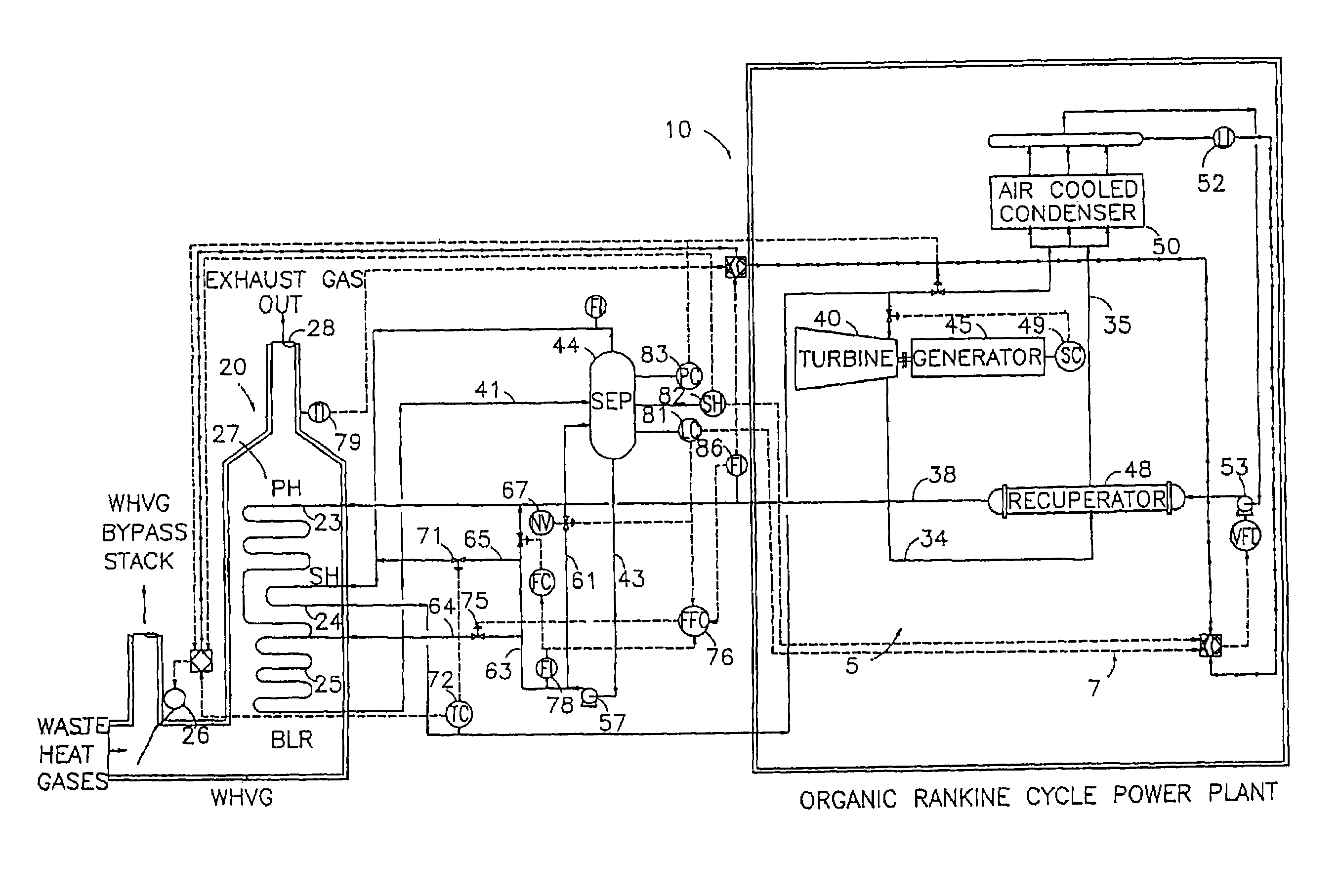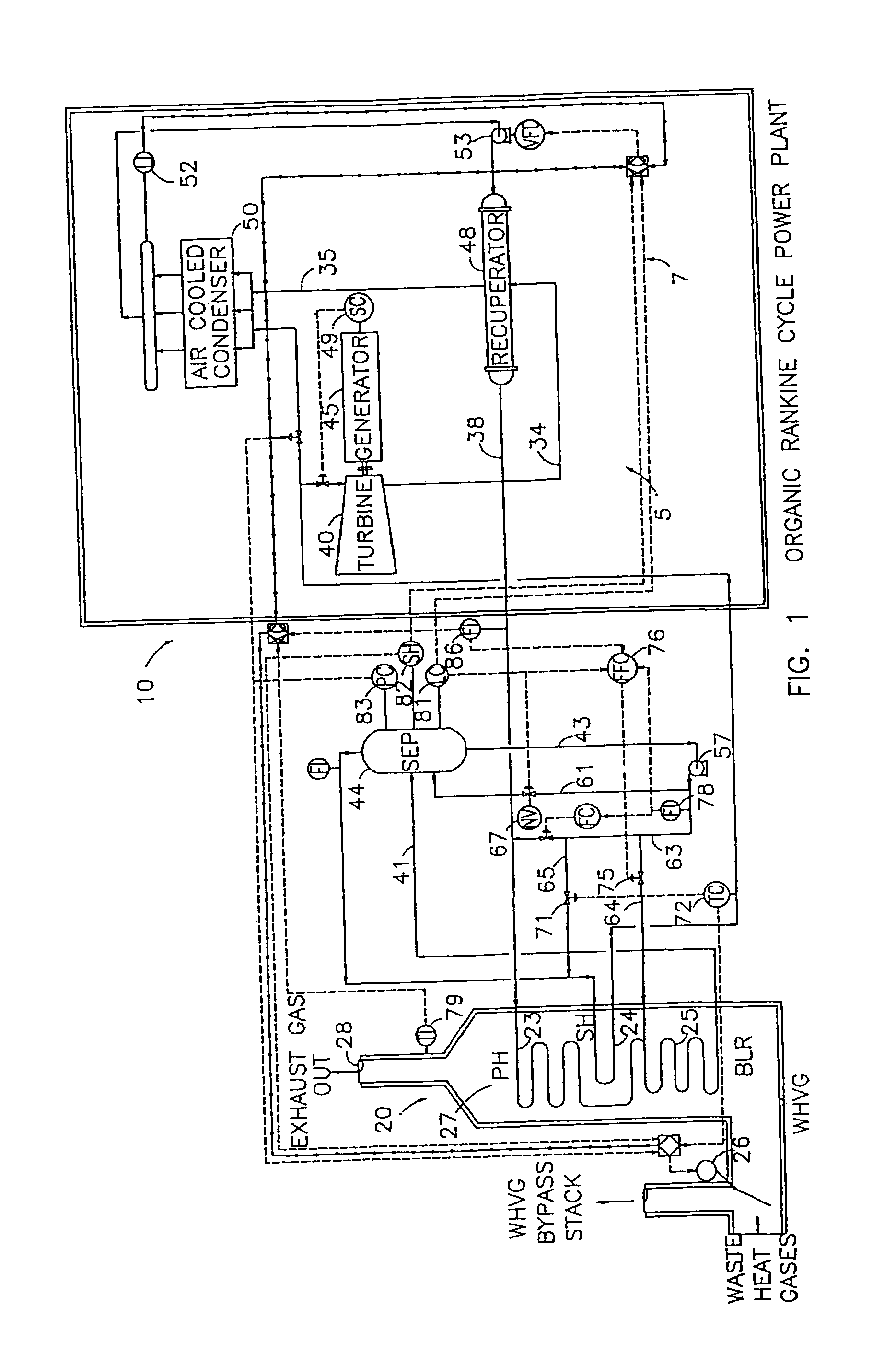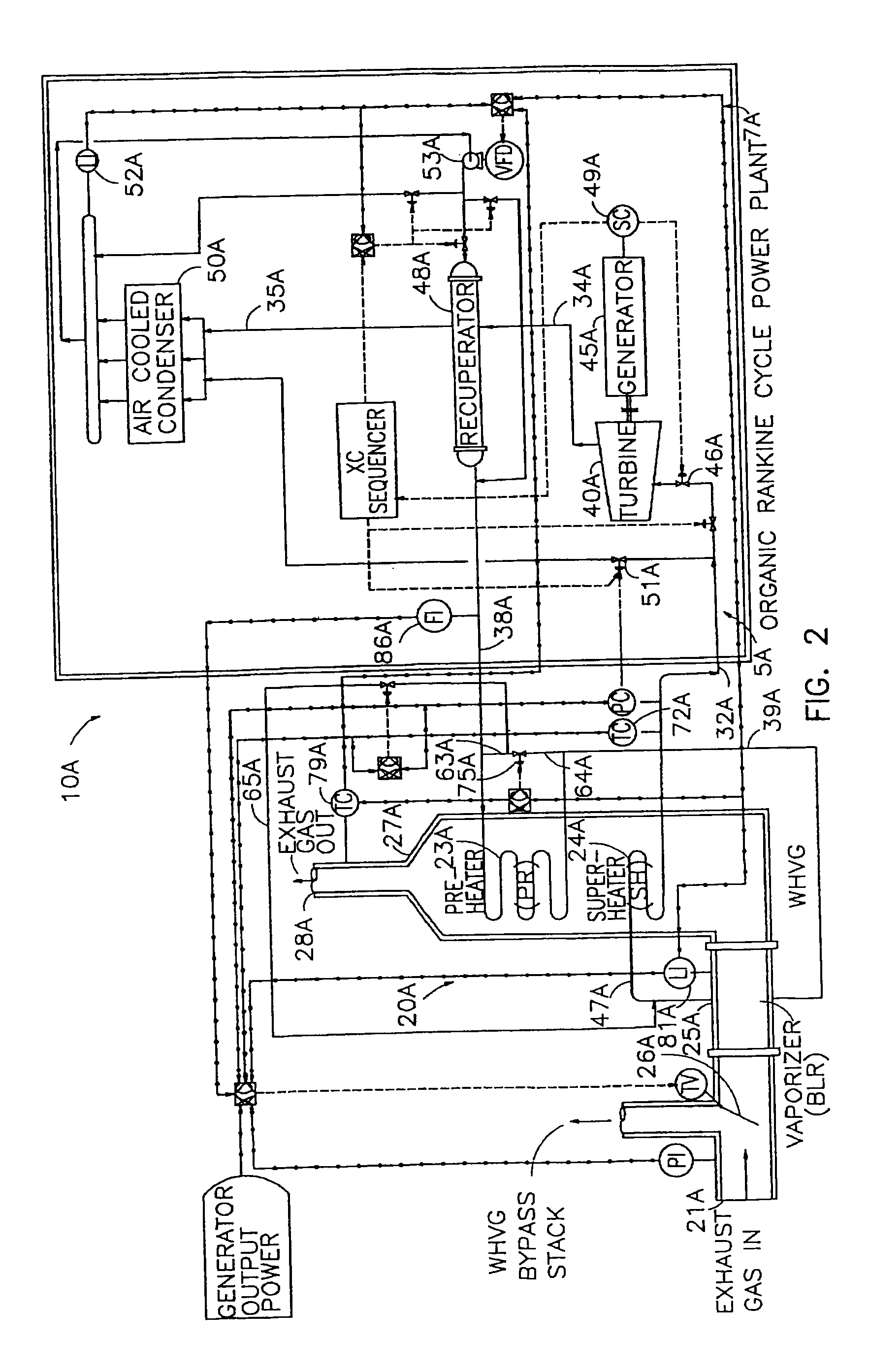Direct heating organic rankine cycle
a technology of organic rankine cycle and direct heating, which is applied in the direction of steam engine plants, mechanical equipment, machines/engines, etc., can solve the problems of reducing the thermal efficiency of such a prior art waste heat recovery system, reducing the risk of degradation, and relatively high capital and operating costs of the intermediate fluid system
- Summary
- Abstract
- Description
- Claims
- Application Information
AI Technical Summary
Benefits of technology
Problems solved by technology
Method used
Image
Examples
Embodiment Construction
[0024]FIG. 1 illustrates an embodiment of a closed, directly heated organic Rankine cycle (ORC) power system, which is designated by numeral 10. The solid lines represent the piping system 5 through which the motive fluid flows and the dashed lines represent the electrical connection of various components of the control system 7.
[0025]The motive fluid of the Rankine cycle, which may be an organic fluid e.g. n-pentane, isopentane, hexane or isododecane, or mixtures thereof and preferably isopentane is brought into heat exchange relation with waste heat gases, such as the exhaust gases of a gas turbine or a furnace or waste heat gases from industrial processes in stacks, by means of a waste heat vapor generator (WHVG) 20, which is a multi-component heat exchanger unit, as will be described hereinafter. Isopentane is the preferred motive fluid due to its relatively high auto-ignition temperature. As the waste heat gases are introduced to inlet 21 of WHVG 20 and discharged as heat deple...
PUM
 Login to View More
Login to View More Abstract
Description
Claims
Application Information
 Login to View More
Login to View More - R&D
- Intellectual Property
- Life Sciences
- Materials
- Tech Scout
- Unparalleled Data Quality
- Higher Quality Content
- 60% Fewer Hallucinations
Browse by: Latest US Patents, China's latest patents, Technical Efficacy Thesaurus, Application Domain, Technology Topic, Popular Technical Reports.
© 2025 PatSnap. All rights reserved.Legal|Privacy policy|Modern Slavery Act Transparency Statement|Sitemap|About US| Contact US: help@patsnap.com



